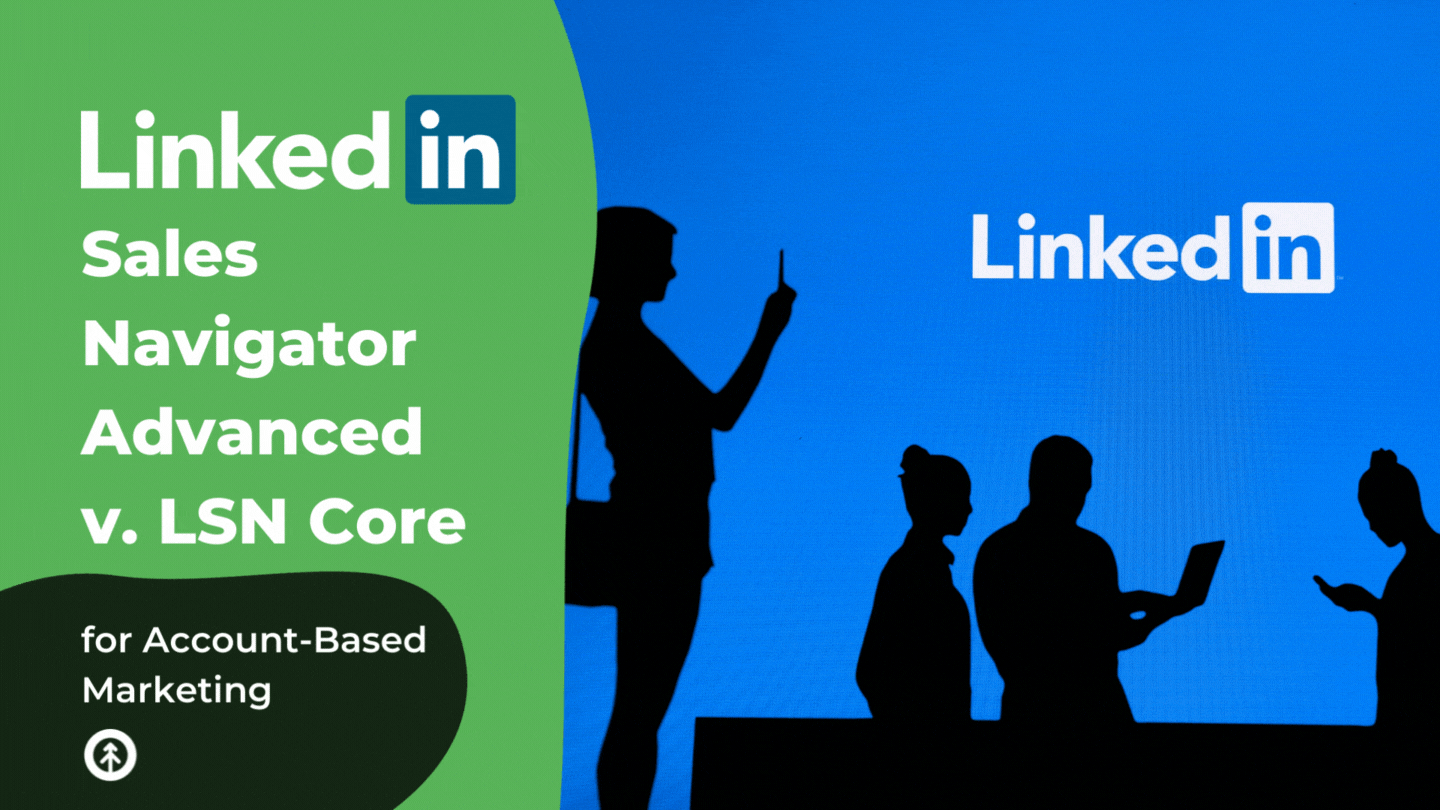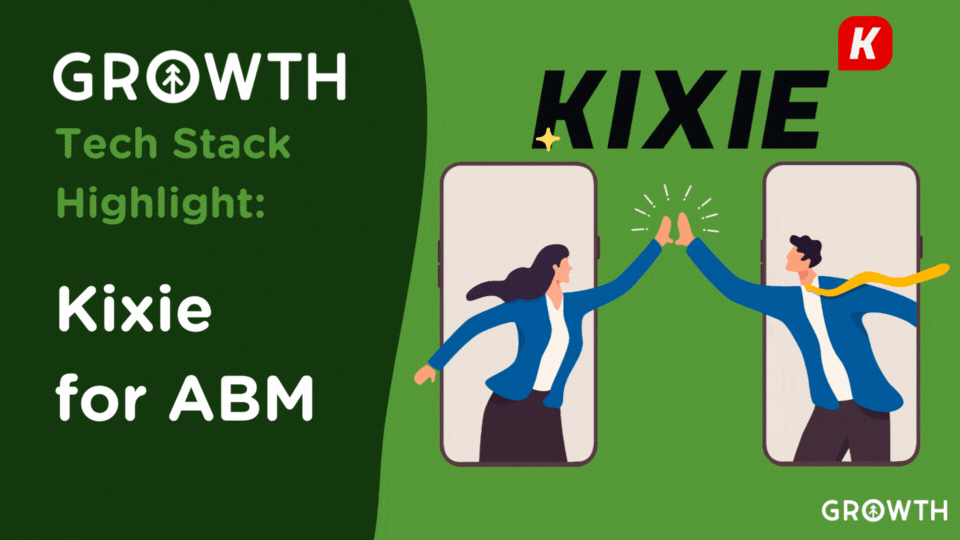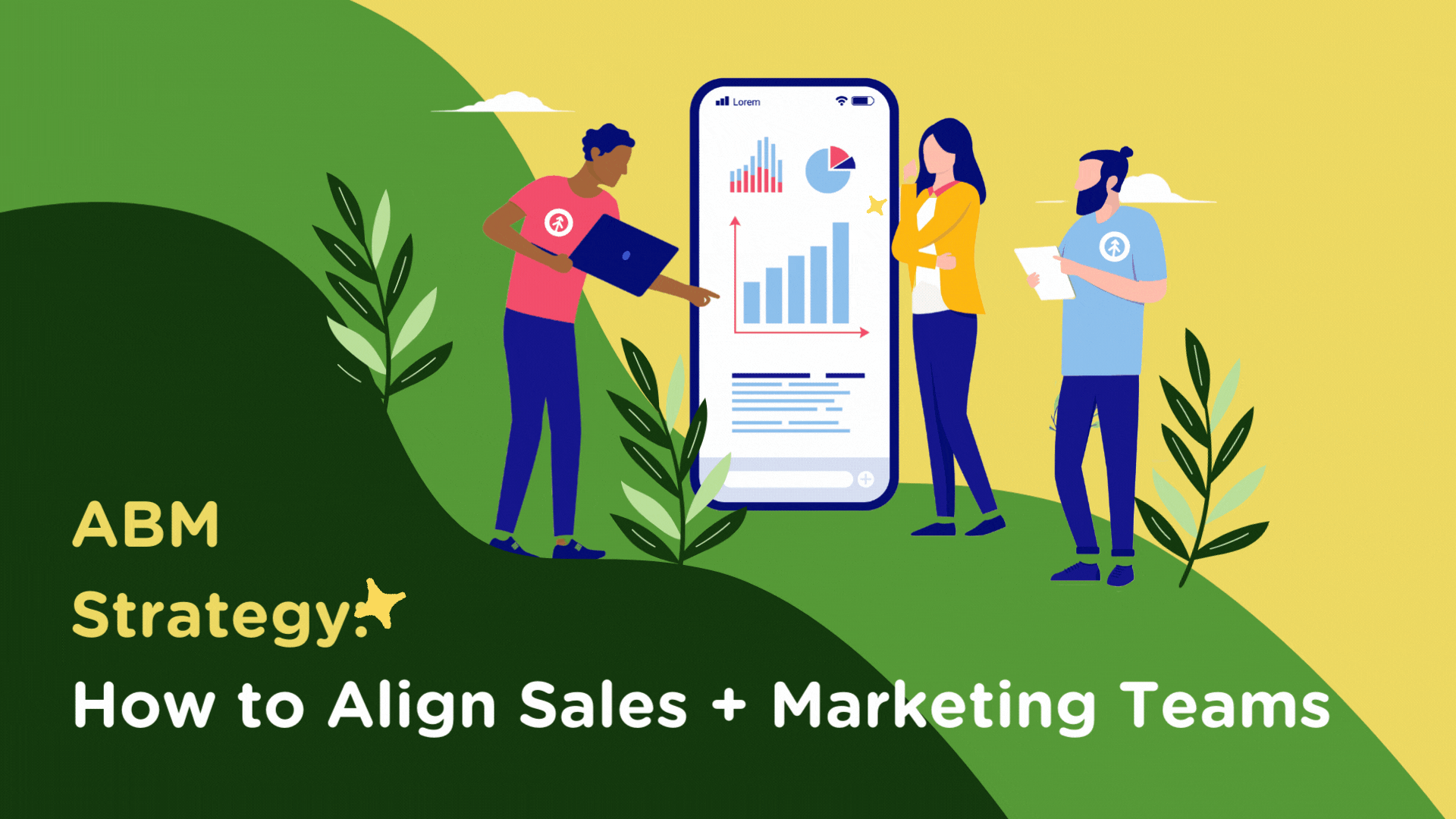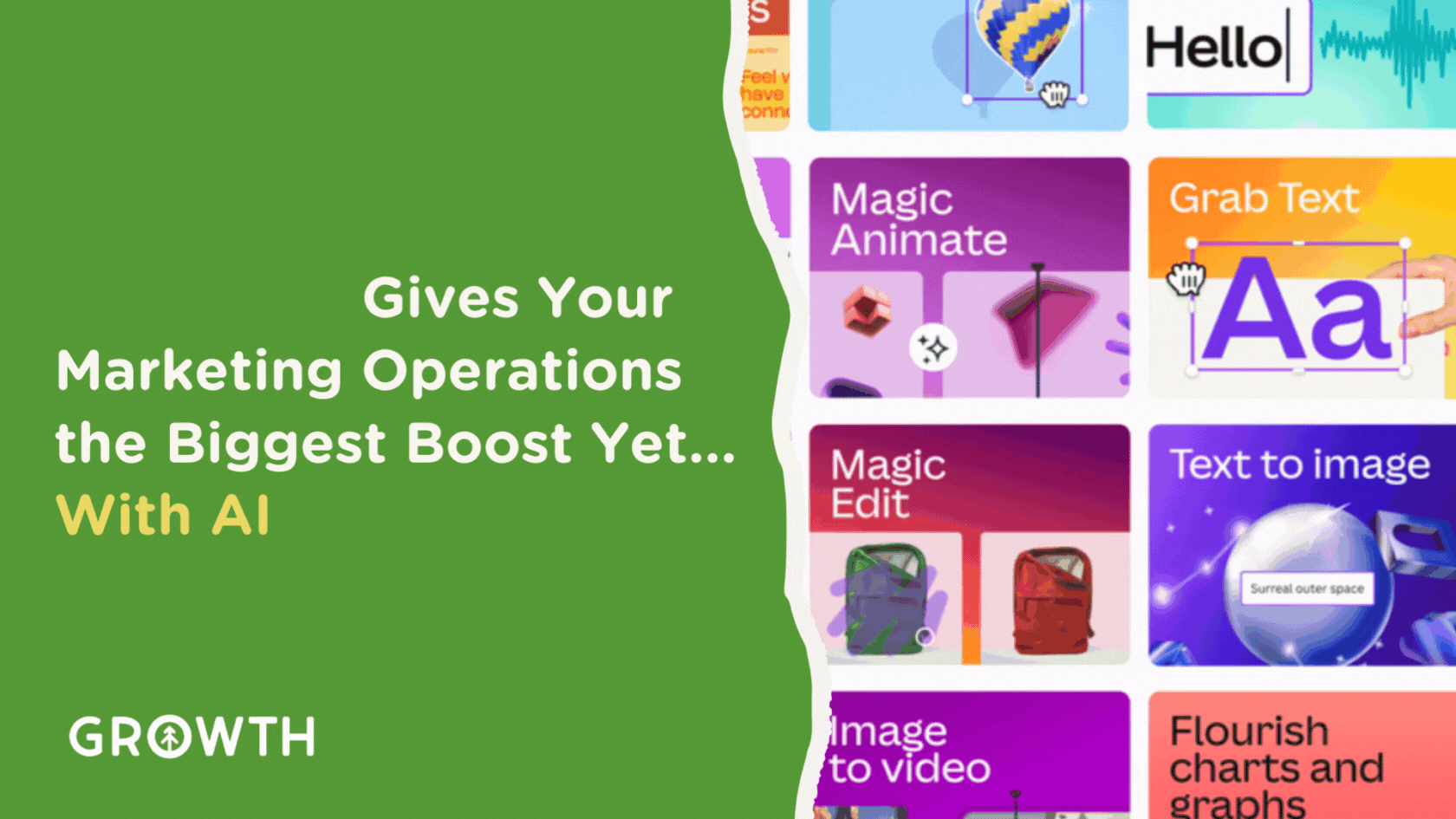A Growth Guide to Account-Based Marketing
What if your sales team could begin conversations with the companies that were the best fit and the highest value for your business?
How would that change the benefit to the ideal clients you’re already serving?
How would that change your bottom line?
Everything would go up but the anxiety, right?
Account-based Marketing—ABM—is a strategy that offers businesses and organizations a way to get directly in front of their target accounts with both marketing campaigns and content as well as sales conversations.

It’s all about working smarter, not harder, and that’s possible when you have a strong strategy and HubSpot tools to help you achieve it. Let’s get into it.
What is Account-Based Marketing
Account-based marketing (ABM) is a growth strategy that helps sales and marketing teams collaborate on creating a buyer experience for a mutually decided upon set of high-value accounts.
Basically, it allows your entire RevOps team to focus on and acquire more of your North Star clients.
A strong ABM strategy allows your business to communicate with the accounts that best fit your business (and vice versa) as if they were individual markets.
With it, your marketing team can create a personalized buyer’s journey with content and campaigns tailored specifically to those specific accounts.
Your sales team, in tandem with your marketing team, can then have seamless conversations with decision-makers for these accounts and increase your overall ROI.
But, an ABM strategy can only work well when paired with Inbound Marketing, so let’s take a look at why.
ABM + Inbound Marketing = Sustainable Growth
Inbound Marketing is a methodology that works perfectly with ABM because, by definition, it provides the right information to the right people at the right time through a combination of SEO, valuable content, and a delightful client experience.
Instead of interrupting your audience, it serves people organically with the kind of content they need right when they need it.
Therefore, when paired with ABM, your team agrees upon who that very specific audience is and creates the right content for your buyer’s journey to boost your sales team’s conversations with target accounts.
Intrigued? Let’s take a look at a few more reasons why applying ABM + Inbound Marketing to your business does all the good:
- Inbound Marketing attracts your target accounts, and ABM spins the flywheel quicker to help you win and delight your best-fit accounts.
- ABM + Inbound saves resources for both sales and marketing teams by focusing efforts on high-value accounts.
- Shared software—HubSpot—allows your teams to create relevant, valuable content and collaborate over the same data and analytics.
How ABM Works
ABM doesn’t work like the traditional sales funnel. Even though it can be applied across industries and business sizes and types, it must be applied with careful thought and direction to work effectively.
Here, we’ll break it down so you can see how to apply it to your own business.
The top 3 ways that ABM works:
- Marketing + Sales Collaboration
- Account Qualification
- Go-to-Market Approach
1. Market + Sales Collaboration
The alignment of marketing and sales is the hallmark of any workable ABM strategy. Without it, it’s not possible to ensure your best-fit accounts will receive the best buyer experience (and thus may not move toward the decision phase along their buyer journey at all).

Sales and marketing must agree on which accounts to target and stay on the same page throughout the buyer journey. That means they have to agree on:
- resource allocation for each account
- role assignments for a smooth transition from marketing to sales
- how they will measure success
2. Account Qualification
Does your business have an ideal customer profile? If so, you’re already moving in the direction of a strong ABM strategy because you’re already thinking about your high-value, best-fit clients and how to attract, engage, and delight them.
But, here’s the big question: do your marketing teams and your sales teams communicate with each other about this?
Enhancing communication and collaboration starts with clear direction and structure, so here are a few talking points around account qualification for your ABM strategy:
- Finances - How much revenue should an organization maintain to qualify as a best-fit account?
- Scalability - How likely is the business to grow well into the future (based on historical performance)? Think about how your business might support their sustained growth over time.
- Competition - If your competition is selling to a business like the accounts you’re considering, there’s a good chance they’re a good fit for you. How might you offer even more value to a set of accounts than your competitors offer?
3. Go-To-Market Approach
Once your sales and marketing teams agree on the accounts to target, they can begin to create a go-to-market strategy for these accounts.
First, they need to understand how a new client might move through the buyer’s journey with your new ABM approach.
If you can identify friction somewhere in that process, it can be addressed through strengthening communication and understanding between RevOps teams.
A personalized buyer experience is a large part of what makes an ABM strategy successful, so sales and marketing teams should be focused on finding ways to add significant value to win these prime accounts.
How to Build an ABM Strategy
To reap the benefits of Account-based Marketing, your business needs a strong ABM strategy to begin. It’s one of our specialties at Growth because we actually use it ourselves.
Here’s an outline of the strategy we use to provide the most value and delight for our own clients’ Growth experience:
- Align Sales + Marketing Teams
- Research Account Personas
- Build Account Plans
- Grow Your Contact List for Target Accounts
- Involve the Entire Buying Committee
- Measure Success with Strong Data
1. Align Sales + Marketing Teams
Sales and marketing teams must collaborate within an ABM strategy so there’s synergy enough to create a custom buyer experience for targeted accounts.

To do that, start with one sales rep and one leader from marketing who can communicate well and lead others toward a similar relationship based on collaboration.
Over time, one marketer can maintain communication with 10 sales reps who can each nurture 10 accounts. That’s a recipe for sustainable growth.
2. Research Account Personas
Similar to a customer persona (in which you identify the attributes of your target customer), an account persona defines the markers of your ideal account. To build an account persona that will keep RevOps teams focused on the right accounts for your business consider the following:
- Their mission, values, and business objectives.
- Which high-value accounts are currently engaged with your inbound content?
- The company size, length of time in good business standing, and scalability.
- How they build revenue.
- The tools and platforms they use.
The list goes on, but it’s important to remember that the key is to make sure sales and marketing agree on which accounts to target.
If marketers are targeting a different set of accounts than your sales team, it’s not going to save resources, it will waste them.
3. Build Account Plans
When you’ve decided which accounts you’ll be targeting, create an account plan to make sure everyone stays focused.
Your marketing and sales teams should work together to decide how many potential leads they’ll need to attract (and with what content) in order to reach the target accounts.
Best practices for building an account plan:
- Tailor each plan to the needs of each account (even though many of them will be similar).
- For each account, determine the decision-maker, influencer/blocker, legal, and end users.
- List out the content you’ll need for each member of the buying committee for each account.
4. Grow Your Contact List for Target Accounts
This is where your inbound marketing efforts really come into play.

The content you’ve ideally been building will help you attract contacts from your target accounts.
If not, determine how your target accounts are finding solutions to their individual pain points and create content for those spaces.
For instance, if they generally Google a solution, your inbound content should be optimized for search engines (SEO). If it’s not, HubSpot CMS has built-in tools to help.
Other places they may look for solutions include events, tradeshows, blogs, newsletters, industry publications or journals, and targeted ads.
Wherever they look, focus on strategically placing content that is relevant, valuable, and solves their issues with what you know, do, or offer.
When you do that, decision-makers are happy to exchange their contact information. And when you maintain a powerful Customer Relationship Management (CRM) tool like HubSpot, you can start to build a list of contacts that grows exponentially over time.
5. Involve the Buying Committee
As you build relationships with people associated with your target accounts, make sure your marketing team is creating content that engages everyone who will be making a decision about your business in those accounts.
Even though nurturing these relationships is generally a sales-led function, your marketing team should play a supportive role here by creating content that the sales team can share.
For instance, if someone on the buying committee has a question or if there’s information that will help drive consistent messaging about your product or service, your sales team can immediately access that content and share it.
Pro Tip: One of the most effective types of content for ABM is the case study. Case studies give data-driven insights into how your business created value and success for a specific client. It will give a clear idea of how you do what you do so that target accounts can see their future success if they decide to go with your business for their solutions. Our Ryan White Case Study for our client Orange County Government in Florida is a good example.
6. Measure Success with Strong Data

The health and strength of your ABM Strategy can be easily quantified with data that lives in your HubSpot CRM.
Here, both marketing and sales teams can share one single source of truth through metrics and analytics on clear reports in HubSpot to let them know exactly what’s working and what’s not so they can pivot quickly.
The metrics we suggest paying careful attention to, include:
- The number of contacts gained in target accounts in your HubSpot CRM.
- Deal health metrics like creation date, velocity, and close rate.
- Revenue credited to target accounts.
Once your ABM strategy is up and running, your sales and marketing teams can continue to collaborate and replicate this process.
This ensures that your business grows sustainably over time as you gain and retain delighted customers and clients that are perfectly aligned with your own goals and mission.
If ABM sounds like the perfect solution for your business but you don’t know where to go from here, just ask us.
Helping businesses grow sustainably is what we do best, and ABM is a big part of that.
Explore More Insights: Related Blog Posts
-
 HubSpotSep 13, 2022
HubSpotSep 13, 2022 Growth Marketing Firm
Growth Marketing FirmABM Strategy: Choose LinkedIn Sales Navigator Advanced Over LSN Core
To start and maintain a truly robust and effective Account-Based Marketing strategy, you have to bring some...
-
 Inbound MarketingMar 5, 2021
Inbound MarketingMar 5, 2021 Growth Marketing Firm
Growth Marketing FirmIs Your Business on Apple Maps?
"Hey Siri, I'm looking for …..." The virtual voice assistant from Apple responds, "Based on your current...
-
 Tech StackOct 31, 2022
Tech StackOct 31, 2022 Growth Marketing Firm
Growth Marketing FirmAutomation Tools for Each Step of Your ABM Strategy
A successful account-based marketing (ABM) strategy requires a lot of coordination and communication between...
-
 Tech StackAug 29, 2022
Tech StackAug 29, 2022 Growth Marketing Firm
Growth Marketing Firm5 ABM Tech Stack Winners
Growth Marketing Firm · 5 ABM Tech Stack Winners So, you’ve got your Account-Based Marketing strategy in its...
-
 Tech StackOct 21, 2022
Tech StackOct 21, 2022 Growth Marketing Firm
Growth Marketing FirmTech Stack Highlight: Kixie for ABM
As business and technology evolve, so too must the strategies that sales and marketing teams use to generate...
-
 Inbound MarketingMar 11, 2022
Inbound MarketingMar 11, 2022 Growth Marketing Firm
Growth Marketing FirmHow Lean Marketing Teams Outperform Large Ones
Remember how in Mad Men there was at least one scene per episode in which Don Draper pitched a marketing...
-
 Sales EnablementFeb 13, 2023
Sales EnablementFeb 13, 2023 Growth Marketing Firm
Growth Marketing FirmABM Strategy: 3 Tips for Aligning Your Sales + Marketing Teams
Account-based marketing (ABM) is a growth strategy that helps sales and marketing teams collaborate on...
-
 Social MediaOct 5, 2023
Social MediaOct 5, 2023 Growth Marketing Firm
Growth Marketing FirmCanva Gives Your Marketing Operations the Biggest Boost Yet... With AI
The digital sphere is always in flux, and for marketing maestros, riding the wave of change isn’t just a...
-
 Inbound MarketingOct 1, 2021
Inbound MarketingOct 1, 2021 Growth Marketing Firm
Growth Marketing FirmGrowth Celebrates 4 years with Increased Commitment to RevOps
(Monterey, CA) Nationally recognized B2B consultancy, Growth Marketing Firm (Growth), turns four years old,...

